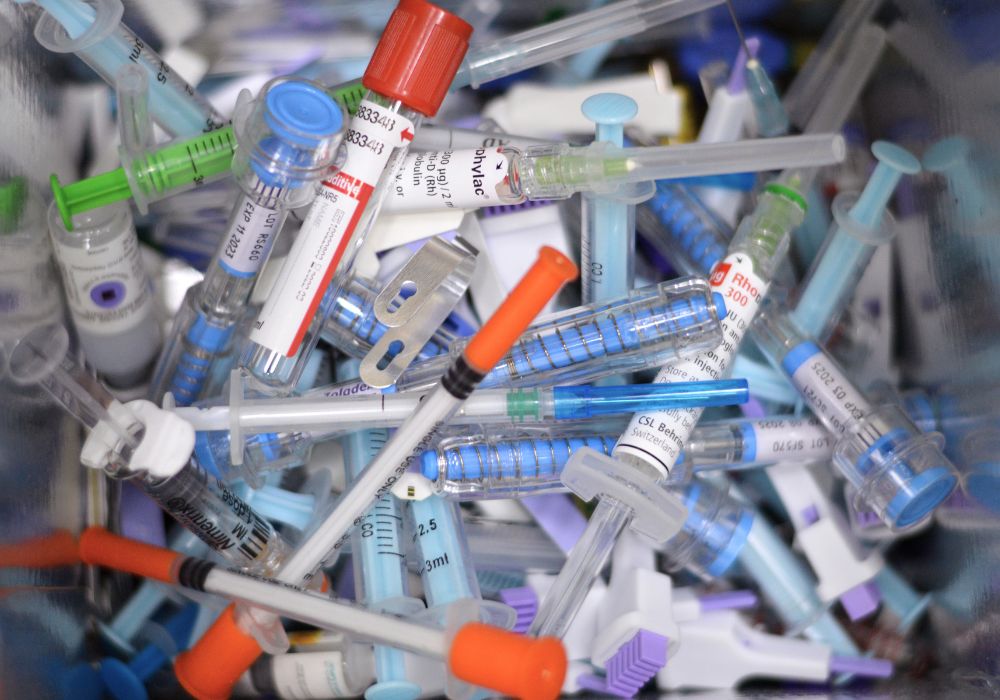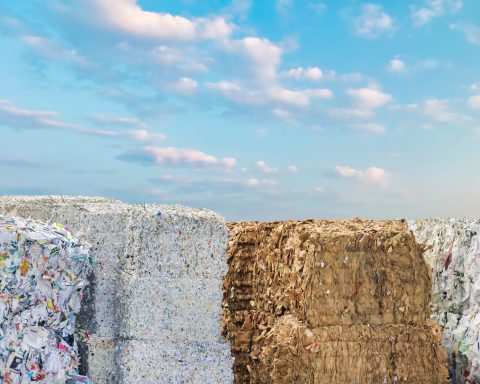Hospitals around the world generate millions of tonnes of plastic waste annually. Much of this waste comes from single-use items such as face masks, surgical gloves, syringes, IV tubes and sterile packaging materials.
What’s worse is that many of these medical plastics aren’t biodegradable. This means they can persist in landfills or oceans for centuries. Eventually they break down into micro- and nano-sized particles, which pose many risks to the environment and our health – including endocrine disruption and cell damage.
Incinerating plastic medical waste also releases harmful chemicals into the atmosphere. This contributes to poor air quality and potentially even global warming.
But there’s a growing push to find eco-friendly alternatives to traditional plastics. Bioplastics, such as polylactic acid (PLA), may be promising replacements to the plastics used in medical products. Bioplastics can be made from plants or algae. This means they can be broken down when the temperature, pH levels and moisture conditions are right, and they don’t create any toxic by-products over time.
Natural fibres, such as bamboo and hemp, are also being researched to replace synthetic materials, as they’re strong yet biodegradable. And unlike traditional plastics, many biodegradable alternatives are designed to break down without releasing harmful chemicals.
Many uses for bioplastics in medicine
Biodegradable plastics are already being used in medical devices – including in heart valves, wound dressings and drug delivery systems.
Because bioplastics come from natural sources, an advantage of using them in medical devices is that they can be reabsorbed during the healing process – so a second surgery wouldn’t be required to remove an implant, for example. They’re also capable of passing through biological barriers, such as the blood–brain barrier, so they can target specific tissues.
Innovations such as 3D printing using biodegradable polymers are also opening new doors for sustainable medical applications. 3D-printed bioplastics are being investigated for use in replacing load-bearing cartilage, repairing heart chambers, performing wound grafts and acting as artificial membranes for kidneys.
RELATED
UN talks to create a global plastic treaty have stalled. Now what?
Is the burgeoning ‘plastic credits’ market a new wave of greenwashing?
A look at the secret world where our waste ends up
Cellulose stands out as a bioplastic because it’s non-toxic and does not cause any side effects when used as a medical device. While mechanically strong and waterproof – two attributes needed for medical packaging – it also breaks down efficiently when buried in soil for composting. This makes it ideal for medical use.
Our review of bioplastic alternatives for medical settings also identified the biodegradable polymers polycaprolactone (PCL) and polylactic-co-glycolic acid (PLGA) as promising options. This is due to their safety and compatibility with medical applications.
We also found that implants using the bioplastic PHA (polyhydroxyalkanoate) are shown to degrade naturally in the body. This could eliminate the need for removal surgeries. Surgical sutures that use PLA can dissolve over time. This may reduce infection risks.
Significant hurdles to rollout for bioplastics
Although many consumers would prefer that more products were made out of bioplastics because they’re good for the environment, there are still many challenges in introducing them more widely in medical care. Sterilization, safety and regulatory approvals are all hurdles that need to be overcome. The high costs and limited availability of bioplastics also remain key concerns.
Medical bioplastics can be up to 50% more expensive than oil-based plastics – despite their potential to reduce the medical sector’s environmental footprint.
Our review also found that regulatory hurdles and high production costs remain key obstacles in a wider rollout of bioplastics in medical care. Another major challenge researchers face in developing medical bioplastics is ensuring that biodegradable materials meet stringent safety and sterility standards required for medical applications.
Life-cycle assessments will also need to be conducted of current and future bioplastic products. A life-cycle assessment evaluates the environmental impact of a product from raw material extraction to disposal – helping identify sustainability improvements and reduce waste. Publishing more life-cycle assessments on bioplastic products will help decision-makers weigh the pros and cons of adopting bioplastics into medical systems.
Still, the potential benefits of bioplastics are huge. Moving away from single-use plastics could significantly reduce the waste burden of healthcare systems while also protecting ecosystems and human health from the dangers of microplastic pollution. Some bioplastics can even reduce greenhouse gas emissions by up to 25%.
Change will not happen overnight. But by investing in biodegradable alternatives, the healthcare sector can significantly reduce its plastic footprint.
This story first appeared in The Conversation. It has been edited to conform with Corporate Knights style. Read the original article here.







